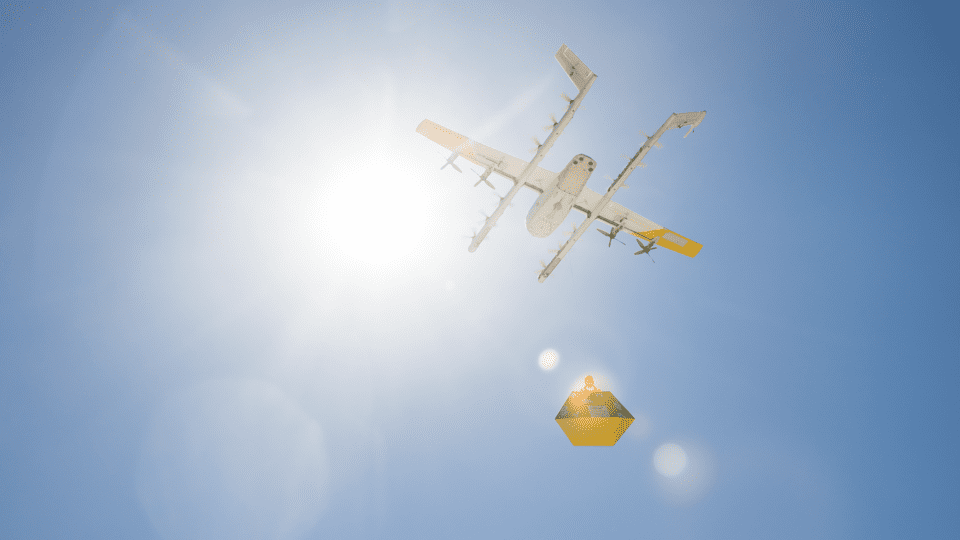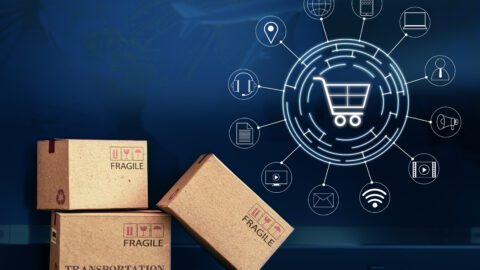Despite now being a regular occurrence around the world, for many, drone delivery still carries an aura of sci-fi mysticism. A recent study by Northwestern University found that drones and ground-based robots are particularly off-putting for consumers — even compared to other automated delivery options like self-driving cars.
But that skepticism is increasingly at odds with other consumer demands, for sustainability, reductions in urban congestion, convenience and speed. Shannon Nash, CFO of Wing Aviation, the drone delivery division of Google parent company Alphabet, is counting on all those other considerations eventually outweighing consumers’ fear of the unknown. In fact, it’s already happening, with Wing regularly delivering everything from medicine to Girl Scout cookies in towns from Texas to Australia.

And while consumer acceptance might be lagging, enterprise enthusiasm for drone delivery is sky high: Wing and its competitors like Amazon all are doubling down on drone initiatives as they race to take the lead in the nascent sector of “fast-mile delivery” (as Wing has dubbed it). These companies are betting that it’s only a matter of time before technology, regulation and consumer opinion all converge into the optimal conditions for takeoff.
Wing already has made an impressive 350,000 drone deliveries worldwide, and the company has partnerships with major retailers such as Walgreens and Walmart in the U.S. and mall operator Vicinity Centres in Australia. Nash sat down with Retail TouchPoints to talk about where things stand with Wing and where the company, and drone delivery, is headed in the future.
Retail TouchPoints: How do you see drone delivery advancing, both as an industry and at Wing?
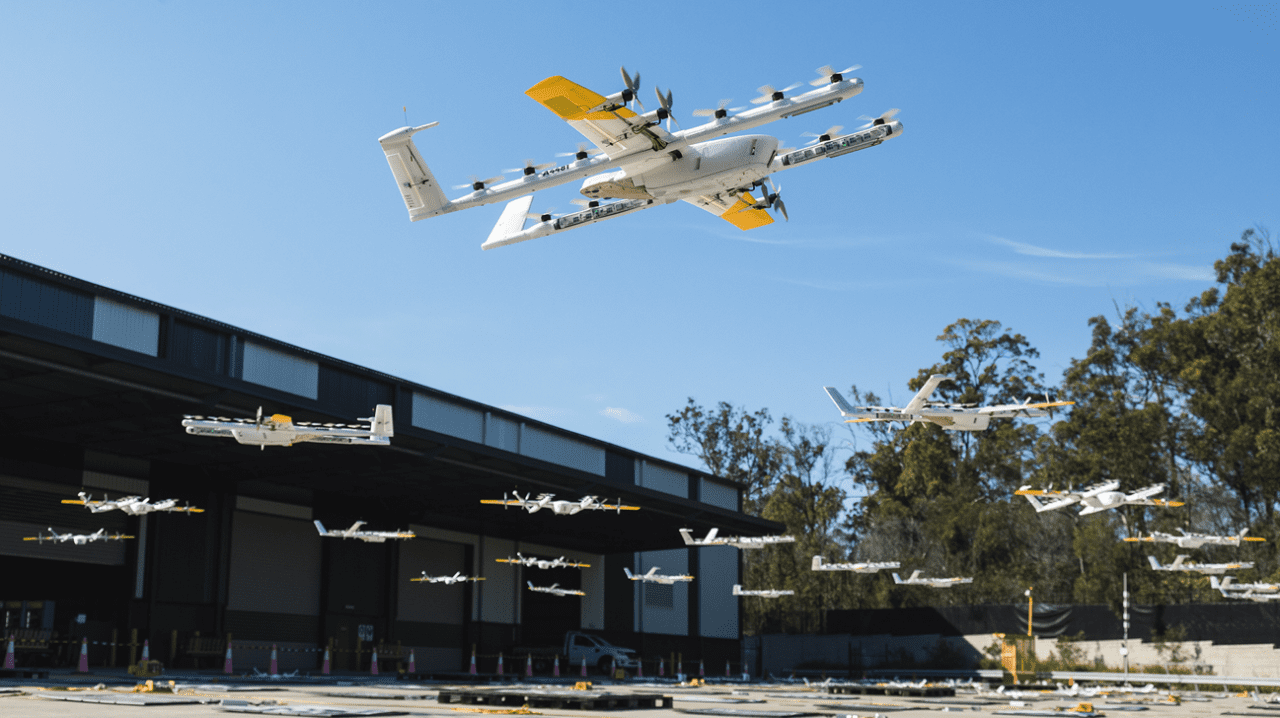
Shannon Nash: When you look at how [last-mile delivery] is going to scale, it’s going to be through volume and efficiencies. If you want to have a cup of coffee delivered, [does it make more sense to do that with] a 3,000-pound car and a lot of different people across the system, or with a technology that takes it off the system and brings it to the customer more quickly — but also, we believe, more safely and more cost effectively?
As far as Wing goes, when you look at big retail partners, Walmart is clearly at the top of the list, so it’s exciting that we’ve announced our partnership with them in the Frisco, Texas area. We’re really looking to scale partnerships like that, in particular in the U.S., because we’ve been operating in the U.S. in a smaller way. We call our sites “nests,” and we also have one in Christiansburg, Va., which is basically Virginia Tech, so more of a rural area. We also have a large operation in Australia — globally we’ve done over 350,000 commercial deliveries, and the bulk of them have been in Australia. But it’s exciting to move into a region like Dallas-Fort Worth, which is a major urban area, and show that we can do those types of deliveries as well.
We are focused on small package delivery; we’re not everything to everybody. If you buy a microwave at Walmart, it’s not going to get delivered to you by our drone. But there are a lot of use cases for small items that make sense. Say you’re making spaghetti for dinner, and you forgot the garlic bread. You don’t want to drive all the way back to the store — we believe you should be able to order that by drone, and we work with our partners to make that happen.
Our standard delivery time is 30 minutes or less, but we certainly have deliveries that come much quicker than that. Our record to date is two minutes and 47 seconds. Part of it is the range, part of it is what item was ordered. And also, the more velocity you get in the system, the more you start to get those types of fast deliveries.
RTP: What is the most popular product currently delivered by Wing?
Nash: Coffee, which actually makes a lot of sense when you think about it. When you need it, you need it, and [the delivery] is quick, so it arrives hot.
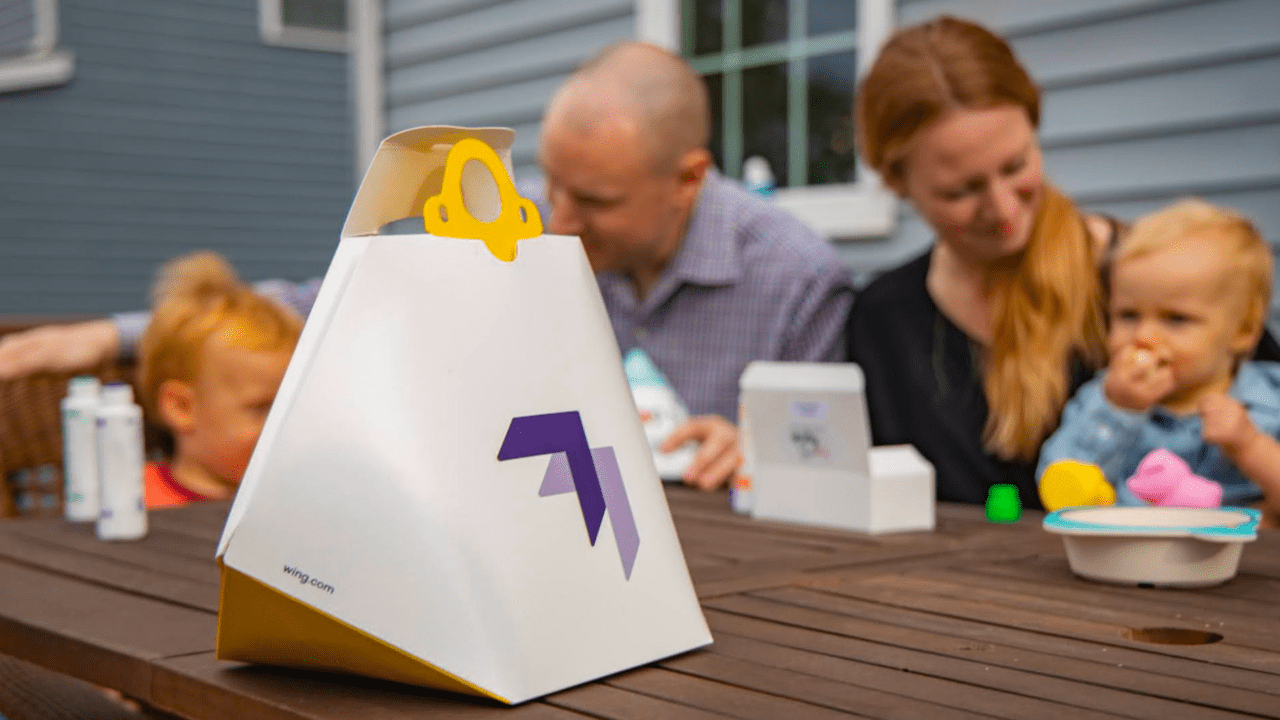
We do this in Australia through a partnership with DoorDash. A lot of people ask me how we keep the coffee from spilling, so we’ve got great videos that show [how it’s transported]. It’s in a cardboard packet, and when it’s in the air it’s cruising at about 65 miles an hour, but the eggs don’t break, the coffee doesn’t spill. Some people also think the drone lands, like in someone’s backyard, but that’s not how it works — there’s a tether, and the drone gently lowers it down.
We’re actually doing a lot of food and beverage deliveries in Australia. Food courts are really popular over there, much more than in the U.S. The other thing that’s really popular is sushi, so we are delivering sushi by drone from the food court in the mall. In that same food court there’s coffee places, juice places, which are also super popular. Energy drinks are also a really popular delivery option, which I understand is [being driven in large part] by gamers.
RTP: You mentioned some of the misconceptions that consumers have about drone deliveries. What else do you think consumers don’t understand about how Wing works, and what do you think it will take to reach more widespread acceptance, even enthusiasm?
Nash: Our drone weighs 11 pounds and it’s made mostly of Styrofoam. I think people often have a vision of something that’s really heavy and made of metal, but once people see what it actually is they’re surprised. We bring prototypes to various shows and events, and when people pick it up, they can’t believe how light it is. People are also surprised when they hear our planes are autonomous. I think many people have the impression that there’s somebody somewhere controlling it with a little joystick, but that’s not the case.
So one part is just getting the public to understand what is actually flying above them and how it works. The second thing is understanding that our cruising altitude is about 150 feet in the air, so you’re not going to see it. It’s not like you’re going to be sitting around watching the drone, because it’s very hard to see and it’s going 65 miles an hour. As our CEO has said to me many times, the air is vast, unlike a road.
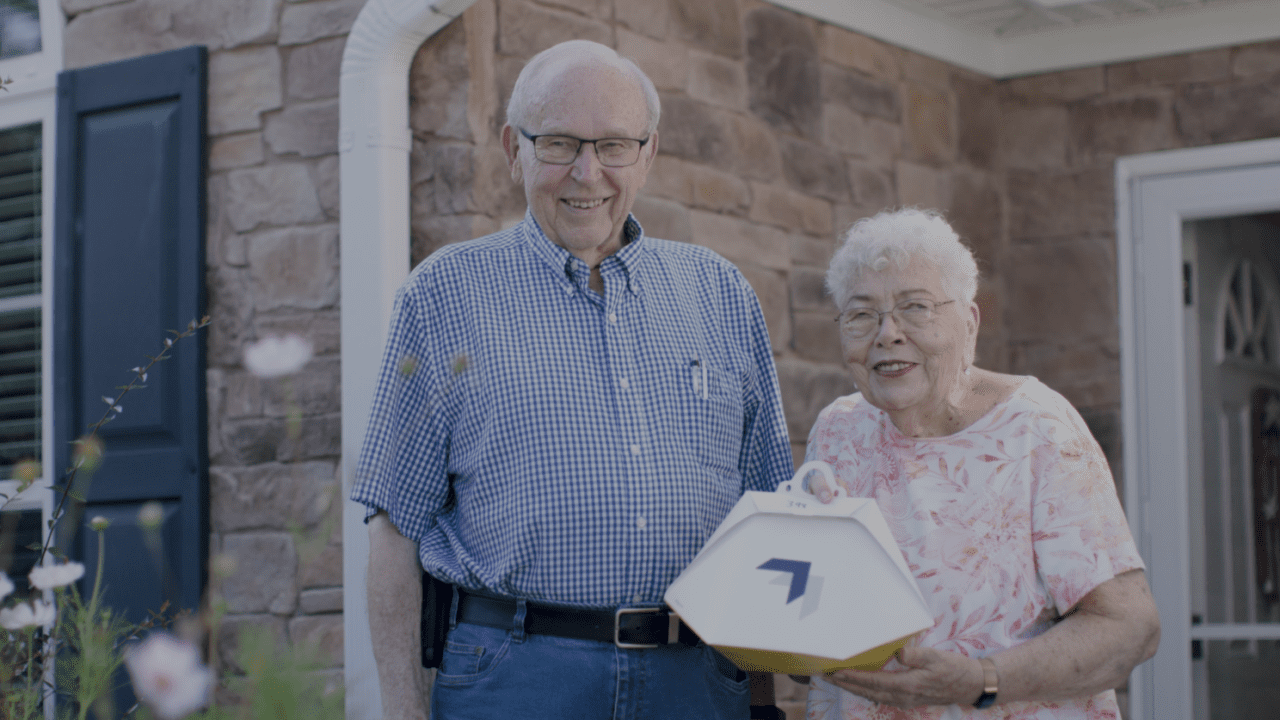
When consumers are actually exposed to drone delivery service, we see a real shift in sentiment. We certainly saw that in Australia, and we’ve been seeing it in the U.S. as well. There’s a really cute couple that just set a world record for the most commercial drone deliveries. And here’s the thing — they’re in their 80s. Most people think this is for younger people, people who are hip and into technology. But this couple in their 80s — she doesn’t drive anymore; he does, but she doesn’t want him to drive, so they started using drone delivery, and they’ve ordered hundreds of things from, like, the local Mexican restaurant and other places. The best part is a big portion of their deliveries were Girl Scout cookies. It just shows that there are interesting demographics that this can appeal to, like people who can’t drive.
There was a study done among the people who live in the Virginia Tech area [where Wing has one of its “nests”], and the NPS was really high not just among people who had used it, but also people who hadn’t yet but said they would consider it. We find those types of studies very encouraging because it’s not a hypothetical, it’s among consumers in an area where this is available and being used.
RTP: What are the biggest selling points for drone delivery among consumers?
Nash: I think it depends on the use case. When it comes to something that is a quasi-need, speed is the primary driver — for example, a parent with a sick kid who needs Tylenol. In other scenarios I do think there are a lot of people who care about the fact that they’ve got a whole bunch of delivery packages coming every day and the impact of that on the environment, and are turning to this as a more sustainable option.
RTP: Many of your competitors seem to be focused on the hardware side of the equation, but your CEO Adam Woodworth recently said that he believes seamless integration with partners and transportation infrastructures is the true key to unlocking drone delivery at scale. Can you talk about this approach?
Nash: That’s super important in terms of how we look at the industry and work with our partners. Our operating model is designed to seamlessly fit into existing store and supply chain environments, and to do so without the need for extensive new infrastructure, structural changes to how you operate or specially trained on-site personnel.
App integrations and APIs that allow these partners to offer our service in their existing app are also key. So a consumer can go to an app, let’s say DoorDash, and order from [the retailer] by drone. The same goes with a retailer like Walmart, it’s just another delivery option for certain types of products, so it works really well with how our partners want to offer things to their customers.
The other thing is that when you look at our tools, [they are built to] operate virtually independently. We have the ability for the drone to recharge itself and for it to recognize obstacles itself, like for example at a delivery spot.
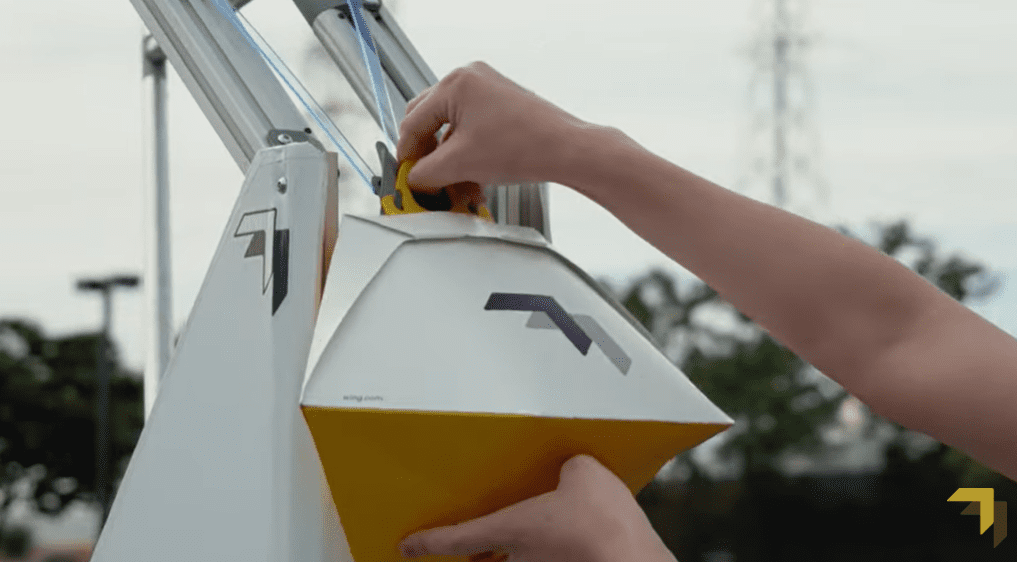
We’ve also introduced something we call an “AutoLoader.” So once an item is picked [by an associate] in the store, the person bringing that out to the drone doesn’t have to sit there and wait for the drone to show up. That package can be loaded on the AutoLoader and they can go on their way. Then when the drone comes, the AutoLoader loads it on the drone, and it flies away. When you compare that to something like curbside pickup, somebody is waiting for the car, then they’ve got to find the car — there’s all this time built in. With AutoLoader all that wasted time disappears. And AutoLoader is not this big piece of tech that takes up a whole bunch of parking spaces or anything like that. It’s literally designed to mimic the curbside pickup order fulfillment process, but in a super-efficient way.
RTP: Outside of consumer opinion, what other barriers do you see to the more widespread rollout of drone technology, like for example regulatory hangups?
Nash: We’re lucky to have some of the most expansive operational approvals in the U.S. We typically get permission to serve a specific geographic area, like Dallas-Fort Worth, [as opposed to] others who approach this by getting approval to deliver to a specific route, which we think is more limited in terms of how you expand.
But at the end of the day the process for the entire industry needs to get faster and more straightforward in terms of how we get these approvals, as well as more predictability about what you need to do to get it and just a more pragmatic structure to allow this industry to grow safely, because that’s what we all care about, growing safely.
In particular there’s this concept called “flying beyond the visual line of sight.” In layman’s term, the visual line of sight is as far as you can see. It’s about being approved to fly past that [point], but the parameters of that are a bit nebulous — we need regulators to better define the target level of safety for the entire industry so that all of us can build with clear regulation. I’m very excited about our tech and the capabilities it enables, but these kinds of larger [industrywide] efforts also really need to happen for us and others to really scale our operations.




